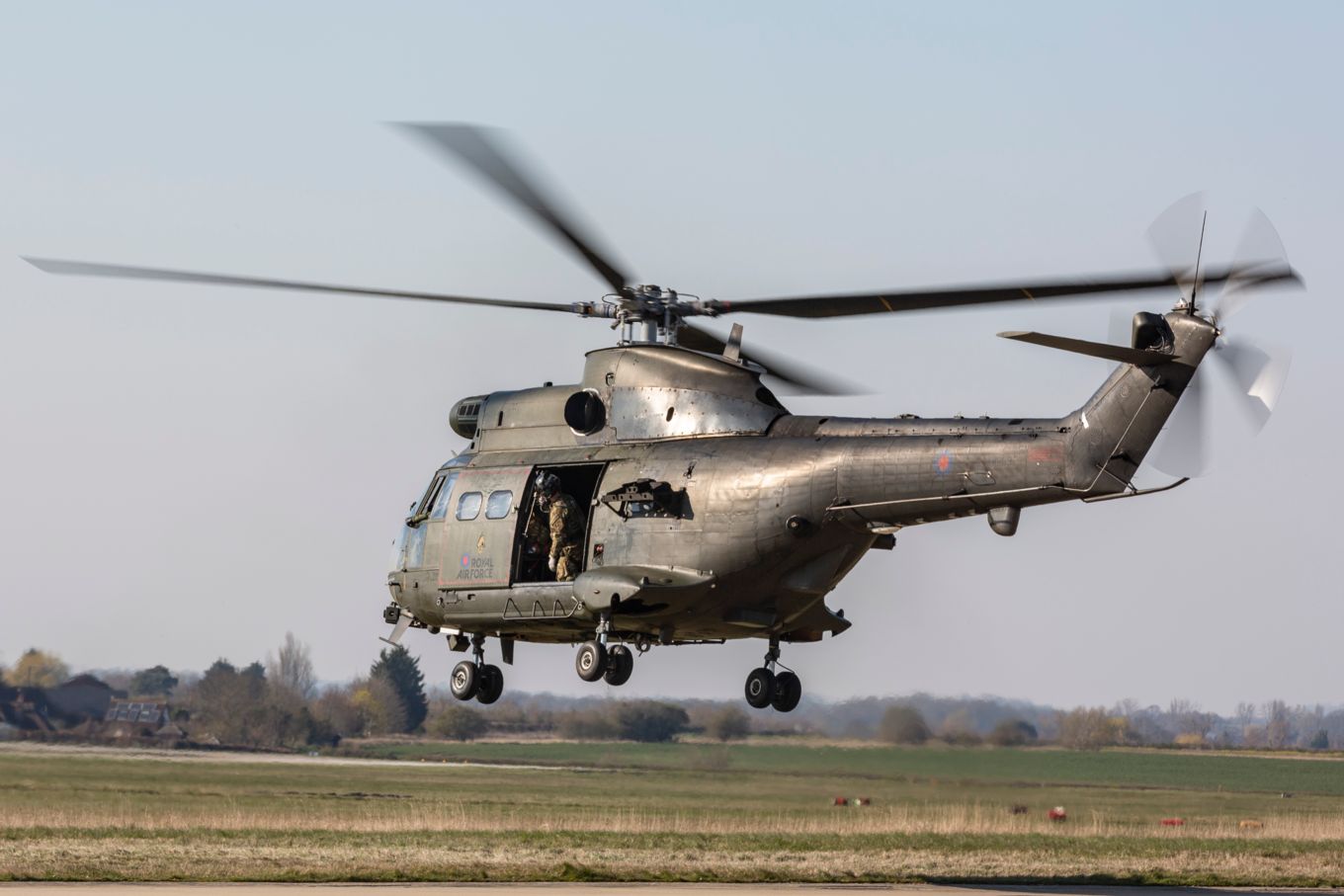Though still in the early stages of refining what they need in a next-generation rotorcraft, the U.K. military and NATO are paying close attention to the U.S. Army’s Future Vertical Lift program as in-service medium-lift helicopters near the end of their service lives.
About 1,000 helicopters — including, among non-U.S. NATO nations, around 100 Mil Mi-8/17s, 191 Airbus SA330 Pumas, 167 Sikorsky S-70/UH-60 Black Hawks, 143 Leonardo AW101s and 331 NH90s — are scheduled to retire between 2030 and 2045, according to U.K. Royal Marine Col. Paul Morris, who serves with NATO’s Vertical Lift Joint Capability Group.

The majority of medium rotorcraft in service with NATO countries first flew between the 1960s and 1980s, with the V-22 the newest airframe first flown in the late 1980s.
That “seems extraordinary to me, as that seems still cutting-edge technology with a tiltrotor, but that’s over 30 years ago,” Morris said during the Vertical Flight Society’s 76th Annual Forum and Technology Display, this year held online because of the ongoing Covid-19 pandemic. “I guess it’s a testament to those engineering practices, not just the design and manufacture of the airframe, but the engineering practices over the years that are keeping these aircraft still flying, still operational.”
The U.S. military is preparing for its own fleet of UH-60 Black Hawks to retire around that same period by developing a Future Long-Range Assault Aircraft (FLRAA) to replace them. Running neck and neck in that program are the Bell V-280 Valor advanced tiltrotor and the Sikorsky-Boeing SB>1 Defiant coaxial compound helicopter.
Careful to mention he was not speaking for the U.K. Ministry of Defence, Morris said the U.K. and NATO are “very interested in the FVL program.” The U.K. also has a memorandum of understanding with the U.S. Army to exchange information on FVL.
“We’re really interested in the way that it is being run, in the approach to it from the Cross-Functional Team, in the way they have gone about their business. . . . We really watch that with great interest.”
“We’re in the utter foothills of this platform’s development,” Morris added. “We haven’t gotten to the stage where we even have a list of requirements, never mind artists’ impressions of what this aircraft could look like.”
NATO’s rotorcraft studies have prescribed replacing medium-lift helicopters first because they are the most widely used and most efficient means of transporting troops and cargo around the battlefield, Morris said. Medium utility aircraft also are more easily and swiftly deployed by strategic airlift than heavier helicopters.
The U.K. has two medium aircraft in service, the Puma HC Mk2 and the Merlin Mk2/Mk4. The Puma is scheduled to retire from service around 2025 and so is in line to be replaced first, Morris said.
“We are currently looking at options to replace that capability,” he said. “The new capability, whatever that may be, could see us out to around about the 2045 epoch.”
Merlins operate in support of the Royal Marines and perform shipboard anti-submarine warfare and airborne early warning missions for the Royal Navy. Those aircraft are scheduled to retire around 2030.
“We’re currently looking at options to extend that and that may take it out to a potential out-of-service date in and around the 2040 timeframe, which looks about right when we’re looking at NATO’s next-generation rotorcraft capability,” Morris said.
“In certain scenarios, a medium aircraft is more, or could be, more effective,” Morris said. “Certainly complex scenarios, urban for example, or some other form of complex terrain.”
A medium-lift future rorotcraft would offer the U.K. Royal Navy flexibility as a “multi-role platform capable of enduring operations,” he said. “Our CH-47 fleet was not designed to go to sea, although it can be taken onto the new Queen Elizabeth-class aircraft carriers . . . it cannot fold and we look enviously at the U.S. Marine Corps and the CH-53K and its capabilities in that respect.”
NATO’s Vertical Lift Joint Capability Group has watched keenly as the U.S. Army advances toward its own Future Vertical Lift technology development goals. Though NATO has no formal requirements, it has identified broad “technological areas for consideration” that track with much of what the U.S. FVL effort is seeking, including modular open architectures, fly-by-wire and artificial intelligence-assisted flight controls, sensors to deal with degraded visual environments and the like.
“We seek to learn the experience of others and draw in those lessons, thos hard-won lessons, into this project,” Morris said.
History suggests developing and fielding a new rotorcraft can take over 20 years, and multi-national research-and-development projects can take even longer, Morris said. Building and buying new rotorcraft in concert with NATO allies also promotes interoperability and therefore may be beneficial to the U.K. and other NATO member states, he said.
“I think it’s fair to say, though, that the jury is still out. We are in the look-and-understand phase, from our perspective,” Morris said. “Whatever happens, platform aside, some of the capabilities that FVL are genuinely breaking new ground on, we would look to get involved more closely with.”









